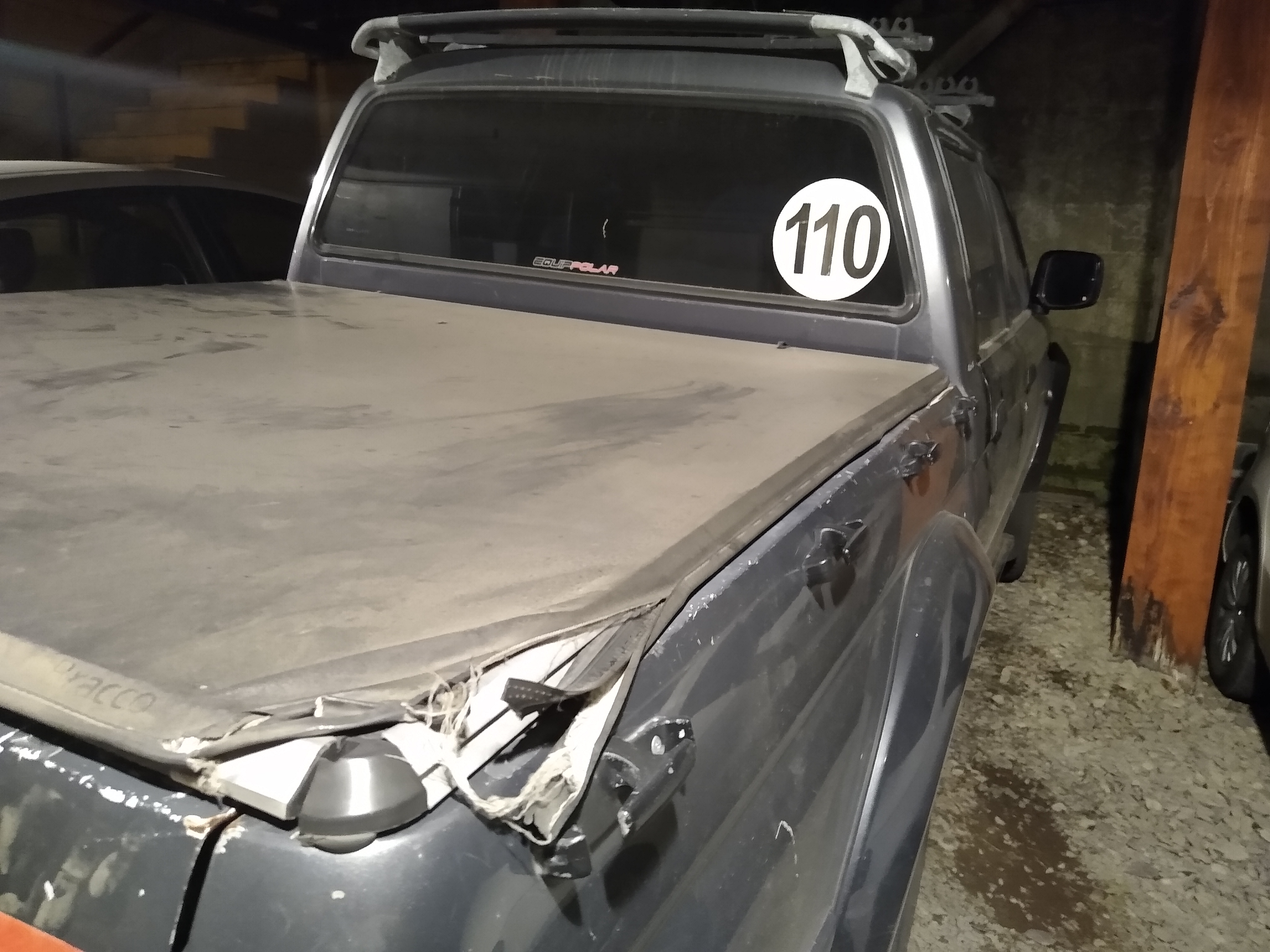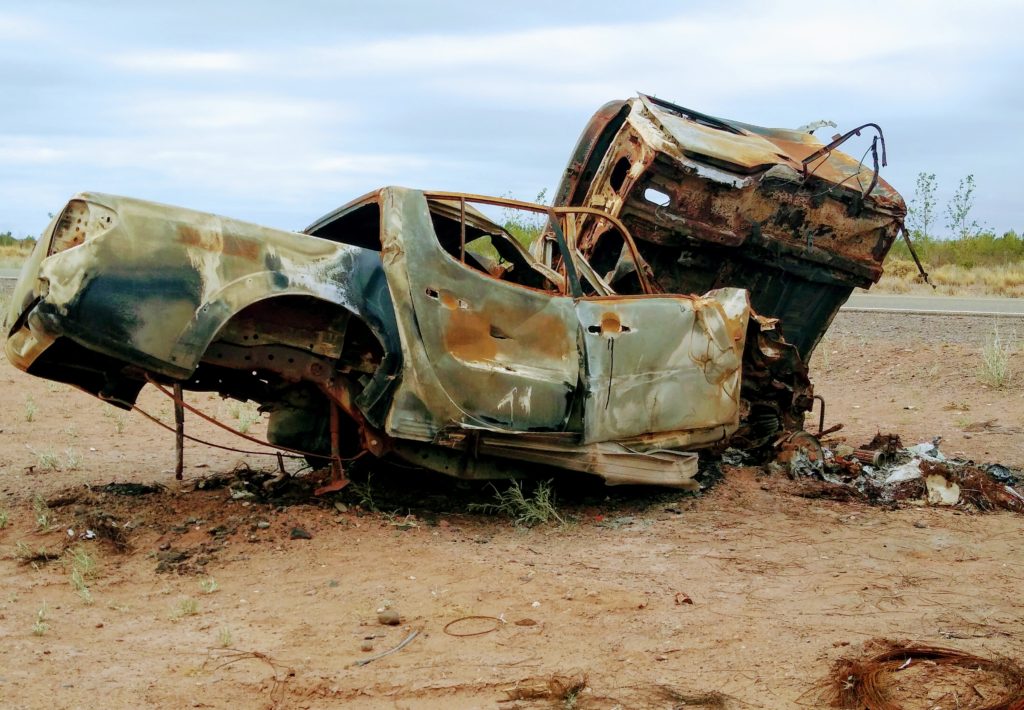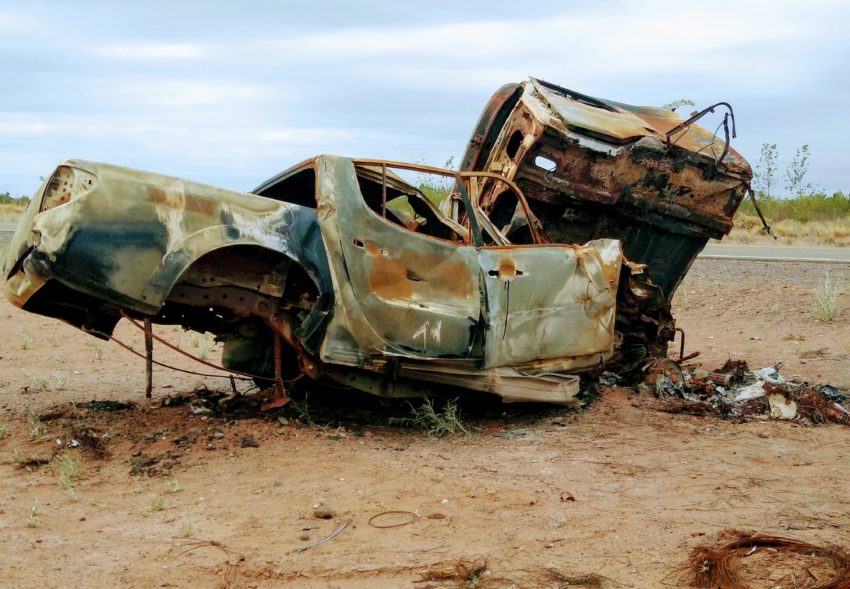Driving a car through Argentina is a heck of a lot easier than driving a tuk-tuk across India, and not just because they drive on the right side of the road here. Unlike Indian drivers who ignore traffic lights, eschew headlights at night to save energy, and drive on whichever side of the road has less traffic and/or fewer potholes at the moment, Argentinian drivers are mostly courteous and law-abiding. But there are a few speedsters here and there, and for many drivers, lanes are merely a suggestion.
Like in the US, the left lane of the freeway is for passing or driving like a bat out of hell, and if you get in the way of one of those bats, they will tailgate you, flash their lights, and blow their horn at you. Your best bet is to remain calm and move over into the right lane at your earliest opportunity.
There will always be slow drivers in the right lane, and many of them will have a speed limit sticker on the back of their car indicating their top speed. Some big trucks have a top speed of 80 km/hour; some cars have a top speed of 100 km/hr. The sticker looks like the speed limit signs on the side of the road – a number inside a circle. Pay close attention to these speed limit signs, as the speed limit will reduce dramatically (ie – from 110 to 80, to 60, to 40) whenever there is an intersection, urban area, or railroad crossing. Sometimes there are long sections of the road that don’t have speed limit signs, which is one of the reasons you’ll want to download the Waze app.

Drivers in South America use Waze instead of Google maps for driving directions, and for good reason. Waze will remind you to turn on your headlights (required on many roads in Argentina), let you know if you’re speeding, and alert you to speed traps, accidents, traffic back-ups, and obstacles in the road. As a Waze user, you can contribute knowledge to help other drivers. For instance, if Waze alerts you that there is an obstacle in the road ahead, you can press a button to confirm that the obstacle is still there or alert the system that it has been cleared. The same goes for speed traps. Waze does NOT have a trip-planning feature, so you’ll still need google maps to do that.
Some drivers in Argentina – particularly taxi drivers – have little use for silly conventions like traffic lanes. It is not unusual to find three cars squeezed into two lanes at a stop light, with one straddling the dividing line. It’s a lot like motorcyclists splitting lanes, which is as ubiquitous here as it is in California, except for the fact that there are more motorcycles. In fact, there is a motorcycle box at each stoplight that allows motorcyclists to squeeze in front of cars so they can go first when the light changes to green. This is better for everyone, as motorcycles are much faster on the draw than cars, which means they are long gone before a single car starts rolling forward. So, instead of becoming annoyed at the motorcyclists squeezing past you at the stoplight, give them a smile as they pass by, because they are getting out of your way.
Recently, when I stopped at an intersection in preparation to make a left turn onto another street, I witnessed a new lane-splitting behavior that seemed to defy the laws of physics. A car driver on the intersecting street who was coming from my right side turned onto my street along the passenger side of my car. This means she turned onto my street on the left side of the road, despite the fact that I was already in that lane. She simply made a new lane for herself where none seemed to exist before. The fact that I have no explanation for this magical maneuver proves that I lack imagination. In this case, the best reaction was to marvel at the majesty and move on.
This intersection – like most non-major ones in Argentina – had no stop signs or lights to indicate which flow of traffic had the right of way. Local drivers seem to know intuitively who should go and who should stop, but I have not yet developed that intuition. Therefore, I slow to a crawl at each intersection and look both ways to see if anyone else is coming, and whether or not they are planning to yield. Based on the horn honks I hear from drivers behind me, I am beginning to believe that the bravest driver has the right of way. Nevertheless, I do not recommend being the bravest driver, because I could be wrong. Dead wrong, in fact, judging from the surprising number of burned out, rusting piles of metal on the sides of the highway that used to be vehicles.

When I do encounter an intersection with a stoplight, I am always excited about the extra yellow light that flashes beneath the red light just before it changes to green. I use that brief warning to press in the clutch and put the car into gear in preparation for moving forward. Many local drivers, on the other hand, zoom through the intersection the instant the yellow “prep” light flashes. When I am in front of the line and don’t do the same, I am treated to “friendly encouragement” in the forms of honks and hand gestures. As a side note, I have noticed that this encouragement is conspicuously absent when a police car is at the front of the line. I’m sure it’s just a coincidence.
Despite the drastic differences between driving in India and Argentina, there are some charming similarities. In both countries, it’s quite common for drivers to pull over randomly for a picnic. At any moment, a car could be parked alongside the freeway, while a multi-generational family surrounds a food-laden blanket spread on the grass under a tree. In addition, both Argentinians and Indians love their tea, though Indians drink sweet chai from small cups while Argentinians sip bitter mate through specially-designed metal straws. Argentinian service stations even have special hot water dispensers for filling thermoses, which Argetinians carry with them everywhere so they can brew up a mate at any moment.
Both countries also have lots of roundabouts with rules I have not yet ferreted out. Sometimes the drivers already in the roundabout seem to have the right of way, while other times it is the drivers entering the roundabout. I take my cues from other drivers and try to follow suit, but I often get it wrong. Fortunately, there is always another driver willing to correct me with a horn honk or hand gesture. I’m sure they’re just trying to help.
